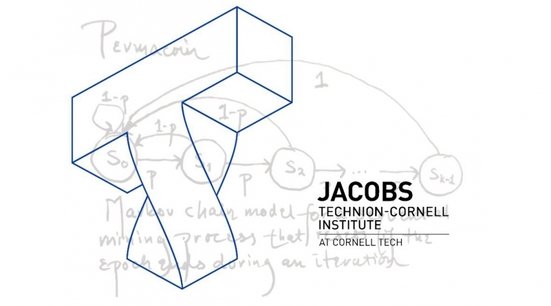Fresh papers introduction
Something that's never ceased to amaze me, ever since I first discovered bitcoin - is the inventiveness of the cryptocurrency community.

Satoshi (pbuh) dropped that whitepaper and it infected thousands of minds across the internet like a virus, and 8 years later we have thousands of thriving interconnected blockchain ecosystems - with more launching every day.
We got here because of the power of open-source and cooperation between crazy-inventors, mathematicians, developers, economists and philosophers all cross-infecting each others minds and building off each others ideas.
It's too much for one individual to track them all - this industry has grown way too fast and its easy to miss some of the ideas in all the daily noise.
I plan to post short summaries of a few of the whitepapers and discussions I've spotted recently, in the hopes that people far smarter then me can get inspired in some way :)
A lot of these papers are often only in PDF form, tucked away in subscription-only journals, and can be algebra heavy. I'll do my best to keep formatting as correct as possible but obviously you should read the original whitepapers before making any judgements on someones math :)
For my first edition I have 3 whitepapers:
- MedRec: Using Blockchain for Medical Data Access and Permission Management (ieee.org)
- The Sleepy Model of Consensus (iacr.org)
- FruitChains: A Fair Blockchain (iacr.org)
Please check them out, and see my conclusions and a note on steemfest fundraising progress at the end.

Image source
MedRec: Using Blockchain for Medical Data Access and Permission Management
Abstract from the whitepaper
Years of heavy regulation and bureaucratic inefficiency have slowed innovation for electronic medical records (EMRs). We now face a critical need for such innovation, as personalization and data science prompt patients to engage in the details of their healthcare and restore agency over their medical data.
In this paper, we propose MedRec: a novel, decentralized record management system to handle EMRs, using blockchain technology. Our system gives patients a comprehensive, immutable log and easy access to their medical information across providers and treatment sites. Leveraging unique blockchain properties, MedRec manages authentication, confidentiality, accountability and data sharing -- crucial considerations when handling sensitive information. A modular design integrates with providers' existing, local data storage solutions, facilitating interoperability and making our system convenient and adaptable.
We incentivize medical stakeholders (researchers, public health authorities, etc.) to participate in the network as blockchain "miners". This provides them with access to aggregate, anonymized data as mining rewards, in return for sustaining and securing the network via Proof of Work.
MedRec thus enables the emergence of data economics, supplying big data to empower researchers while engaging patients and providers in the choice to release metadata. The purpose of this short paper is to expose, prior to field tests, a working prototype through which we analyze and discuss our approach.
Read the whitepaper here

Image source
The Sleepy Model of Consensus
Authors: Iddo Bentov , Rafael Pass, Elaine Shi
From: Cornell, CornellTech, Initiative for Crypto-Currency and Contracts (IC3)
Whitepaper - https://eprint.iacr.org/2016/918.pdf
Abstract from the whitepaper:
The distributed systems literature adopts two primary network models, the synchronous model where honest messages are delivered in the next round, and the partially synchronous (or asynchronous) model where honest messages are subject to unpredictable adversarial delays.
In this paper, we show that more nuanced formal models exist beyond the traditional syn-chrony and asynchrony stratification | and interestingly, such new models allow us to articulate new robustness properties that traditional models would have failed to capture.
More specifically, we articulate a new formal model called "the sleepy model of consensus", where we classify honest nodes as being either alert or sleepy. Alertness implies that the node is online and has good network connections; whereas sleepiness captures any type of failure or network jitter. We then describe the Sleepy consensus protocol that achieves security as long as at any time, the number of alert nodes outnumber corrupt ones.
No classical synchronous or asynchronous protocols attain such robustness guarantees, and yet we show how to lever-age Nakamoto's blockchain protocol, but without proofs-of-work, to achieve these properties,
assuming collision resistant hash functions, the existence of a public-key infrastructure and a common reference string.
Read the whitepaper here

Image source
FruitChains: A Fair Blockchain
Authors: Rafael Pass, Elaine Shi
Whitepaper - https://eprint.iacr.org/2016/918.pdf
Abstract from the whitepaper
Nakamoto's famous blockchain protocol enables achieving consensus in a so-called permissionless setting |anyone can join (or leave) the protocol execution, and the protocol instructions do not depend on the identities of the players. His ingenious protocol prevents "sybil attacks" (where an adversary spawns any number of new players) by relying on computational puzzles (a.k.a. "moderately hard functions") introduced by Dwork and Naor (Crypto'92).
Recent work by Garay et al (EuroCrypt'15) and Pass et al (manuscript, 2016) demonstrate that this protocol provably achieves consistency and liveness assuming a) honest players control a majority of the computational power in the network, b) the puzzle-hardness is appropriately set as a function of the maximum network delay and the total computational power of the network, and c) the computational puzzle is modeled as a random oracle.
Assuming honest participation, however, is a strong assumption, especially in a setting where honest players are expected to perform a lot of work (to solve the computational puzzles). In Nakamoto's Bitcoin application of the blockchain protocol, players are incentivized to solve these puzzles by receiving rewards for every "blocks" (of transactions) they contribute to the blockchain. An elegant work by Eyal and Sirer (FinancialCrypt'14), strengthening and formal-izing an earlier attack discussed on the Bitcoin forum, demonstrates that a coalition controlling even a minority fraction of the computational power in the network can gain (close to) 2 times its "fair share" of the rewards (and transaction fees) by deviating from the protocol instructions.
In contrast, in a fair protocol, one would expect that players controlling a fraction of the computational resources to reap a Φ fraction of the rewards. In this work, we present a new blockchain protocol the "FruitChain protocol" which satisfies the same consistency and liveness properties as Nakamoto's protocol (assuming an honest majority of the computing power), and additionally is δ-approximately fair: with overwhelming probability, any honest set of players controlling a fraction Φ of computational power is guaranteed to get at least a fraction (1 - δ)Φ of the blocks (and thus rewards) in any length K segment of the chain (where K is the security parameter).
As a consequence, if this blockchain protocol is used as the ledger underlying a cryptocurrency system, where rewards and transaction fees are evenly distributed among the miners of blocks in a length K segment of the chain, no coalition controlling less than a majority of the computing power can gain more than a factor (1 + 3
δ) by deviating from the protocol (i.e., honest participation is an n/2-coalition-safe 3δ-Nash equilibrium).
Finally, the fruit chain protocol enables decreasing the variance of mining rewards and as such significantly lessens (or even obliterates) the need for mining pools.
Read the whitepaper here
Conclusion + My steemfest progress
As a side-note , my last few posts that I've put a heap of time into have averaged less then a dollar each :(
I don't like complaining about these things, because I feel like I have a lot of loyal followers and have made more on Steemit then the majority of users and I'm extremely grateful for all of the support that I've received. Despite getting a lot of votes, there has been a huge dip in my average payout value recently..
At the same time, my partner @krystle is starting to see great results for her hard work which I'm uber proud and happy about, but I feel like a massive douche putting her earnings towards a trip for myself - especially with her Birthday in a week!
We currently have $100SBD we're waiting on a conversion for and ~$70 SBD in my account + @krystles ~$120 in SBD earned in the 2 weeks since the steemfest announcement..
The price has mostly been dipping since we stopped converting and powering up all our SBD rewards and started saving for steemfest which hasn't helped the situation - hopefully that's about to turn around.
At this rate its hard to imagine raising the thousands I would need to make it to @steemfest , I'm wondering if we should just buy some steem rings or steemfest souvenirs for ourselves - and power up any change instead.
I'm not steeming as often as I used to because my kids are on school holidays and it's also been a sharp reminder of just how much daily support they require - and what I'd really be expecting from my partner krystle if I left the country for a week.
I would love the opportunity, but with the funds seemingly out of reach and a few other more private dramas beginning to surface I don't think its realistic or even possible at this point for me to go to @steemfest :(
Nothings decided yet - What do you think Steemit ?

Written by @ausbitbank - If you found it interesting please see these
@steemleak ~ steemviz ~ steemcap ~ steemUSD/sbdUSD indicator

As much as I'd like to go to Steemfest, I think it's more realistic for me to attend in a year or two - depending on how my reputation and earnings grow. So much real life stuff to do first that I can't take or money to go. I will be there in spirit.
Hopefully the kids are settling down a little bit and not getting too antsy with the school break. You've got your hands full, but you're strong. You'll get though it. :)
NIce good work and i love these kind of articles